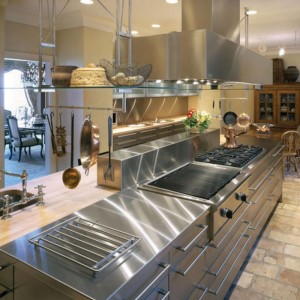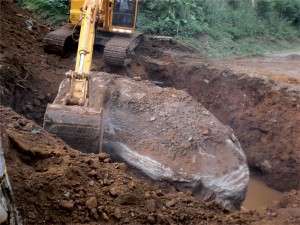8 Ways To Stay Within Your Building Budget
 The Devil is in the Details
The Devil is in the Details
By Shelagh Duncan
Once you have purchased your piece of paradise, and decided that it is time to think about building your vacation, part-time or future home, you will ask your builder “How much will the project cost?” The answer isn’t always straightforward and easy. You see, a home construction budget, in both its creation and maintenance, is more art than science. There are way too many variables when you are building a custom home for the builder to be able to be 100% on mark. Costs of materials can increase from one week to the next as can the price of gas, so transport costs increase. It is all a bit unpredictable, so you will want to do as much research as you can before you begin.
The best approach to identifying general costs for your specific project and location is to talk with several architects, designers and builders. Each will probably give you a different “number,” so you’ll have to drill down into the detail of what that number means.
- Compare apples with apples
Getting a price per sq. meter from a builder is easy enough you would think, but the catch is that not all builders include the same things in their price. Some may give you lighting and bathroom fixtures, but no closets; others may give you all the cabinetry but not include lighting and fans.
Be aware that there are also different qualities of fixtures, tiles, paint, lighting – everything.
- Identify all the cost components
 Unless you have built a new home before most of us do not realize all the additional costs entailed in new home building, and how quickly they add up. Naturally the largest slice of this pie will be the construction costs, but there will be many more, including legal and architect fees, not to mention lot preparation, permit costs, bank transfer fees, and of course – upgrades.
Unless you have built a new home before most of us do not realize all the additional costs entailed in new home building, and how quickly they add up. Naturally the largest slice of this pie will be the construction costs, but there will be many more, including legal and architect fees, not to mention lot preparation, permit costs, bank transfer fees, and of course – upgrades.
At the outset, do your research and identify all of your potential costs and assign each a realistic value. It would be a shame to finish the house but have no money left for landscaping, appliances or furniture. A general rule-of-thumb back home is to allow 10% of the value of the home for furnishing, and about the same for landscaping. This of course, will depend on your particular lot.
Some larger builders are starting to offer ready-to-go furniture packages, so you can be more in control of your final costs. When the house is done you can move right in knowing that you have as much, or as little as you need. As mentioned in an earlier article, your local furniture store in Uvita also offers pre-designed furniture packages in a full range of prices and qualities, including special packages for rentals. They always come with great savings over purchasing piece by piece, so you can enjoy better quality and selection – and spend less!
- Be honest with yourself
We all want to build that fabulous house of our dreams with all the bells and whistles – but we usually have to settle for something less. However all is not lost! Evaluate what are the ‘must-haves’.
For example, if you really want to have that beautiful restaurant stove that costs almost as much as a small car, don’t budget for the generic appliances from the local appliance store. Think about what is important to you, what you really want, and how you really want to be able to use the home you are creating – and then make sure there is a place in the budget for it.
- Allow for a WOW factor
 In the budget allow for the few places where you will want to splurge. For example, the kitchen backsplash is a place you may want to do something special, or perhaps a beautiful hand-painted window design for the bathroom or dining area.
In the budget allow for the few places where you will want to splurge. For example, the kitchen backsplash is a place you may want to do something special, or perhaps a beautiful hand-painted window design for the bathroom or dining area.
Even if the cost of your exquisite, custom, hand-painted window or basin for example, is on the extravagant side, allow yourself to splurge on this one thing. You’ll enjoy it for a long time to come – and you will enjoy wowing your friends!
- Have a plan & keep to it
 A sure way of busting the budget is to defer decisions. Construction has begun and you have not made nearly enough decisions about which tile or plumbing fixtures are to be used. Your builder starts pressuring you to make decisions, or worse just does something without your input. You may find yourself having to tear out work, or worse yet, live with it because you don’t have the money or time to change it.
A sure way of busting the budget is to defer decisions. Construction has begun and you have not made nearly enough decisions about which tile or plumbing fixtures are to be used. Your builder starts pressuring you to make decisions, or worse just does something without your input. You may find yourself having to tear out work, or worse yet, live with it because you don’t have the money or time to change it.
The best way to avoid these nightmare scenarios is to have your architect and/or designer prepare a detailed set of drawings and check them over carefully to make sure that all the decisions have been made before starting construction. Then, don’t change your mind! It is easier said than done, but preparing a plan and sticking to it is the best way to stay on track.
- Allow for contingencies
 Like other laws of nature, the law of construction is that “stuff happens”. It could be a problem with the bearing capacity of the soil or the cut behind or beside your plantel, or discovery of a huge rock buried where they want to dig the foundations! The only way to deal with the unknown is to allow for a contingency in the budget. The best approach is to allow for 15% to 20% and then gradually reduce the contingency as you go through the project phases. When you first start the design, you’ll have a line item in your budget for a, say, 20% contingency. After the drawings are done and the pieces of the project are identified you might reduce the contingency to 10%. As you go through construction, you’ll be able to reduce the contingency even more so that when construction is complete the contingency is zero. If it isn’t used, consider it found money – you can then buy that great couch!
Like other laws of nature, the law of construction is that “stuff happens”. It could be a problem with the bearing capacity of the soil or the cut behind or beside your plantel, or discovery of a huge rock buried where they want to dig the foundations! The only way to deal with the unknown is to allow for a contingency in the budget. The best approach is to allow for 15% to 20% and then gradually reduce the contingency as you go through the project phases. When you first start the design, you’ll have a line item in your budget for a, say, 20% contingency. After the drawings are done and the pieces of the project are identified you might reduce the contingency to 10%. As you go through construction, you’ll be able to reduce the contingency even more so that when construction is complete the contingency is zero. If it isn’t used, consider it found money – you can then buy that great couch!
- Beware of scope creeps
A sure way to bust your budget is the dreaded “While we’re it we might as well … “. You may justify it by saying “it’ll only be a few hundred dollars,” but once you do that a few times, you’ll have added a bunch of extra work and materials that will definitely blow your budget.
Remember that you made a plan, and if staying on budget is still important you must remain determined to stick to it.
- Consider trade-offs
Sometimes it’s difficult, if not impossible, to pass by that truly special item that you find during the project that’s not in the budget. When this happens, take a look at your budget and what you have left to accomplish, with the goal of reducing the cost of something else to afford this new find. Is there a part of the work, such as painting interior rooms, that you can do yourself?
Get what you want and stay on track by moving budgeted amounts from one pocket to another. This should be an exciting and fun time for you: do your homework well and enjoy the results!
Until next time…
Shelagh
Royal Palm Interiors – Uvita, 2743-8323, [email protected]

